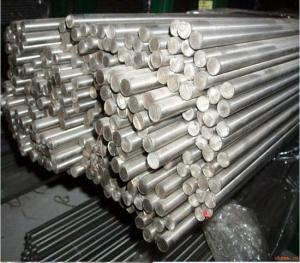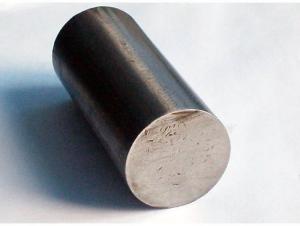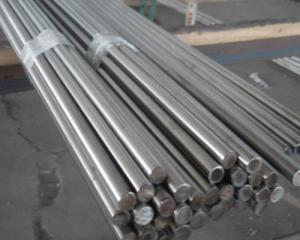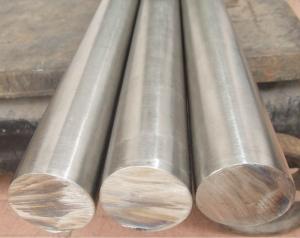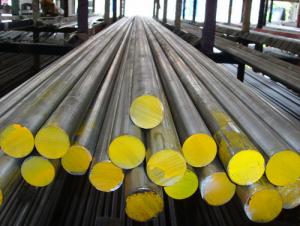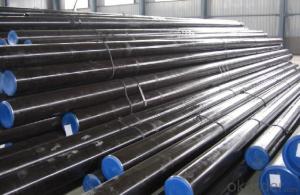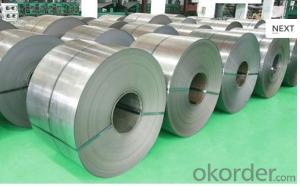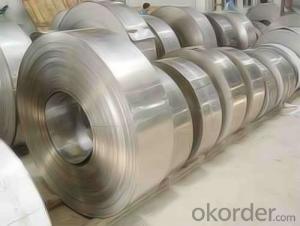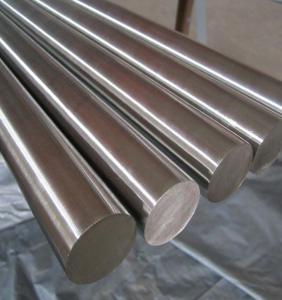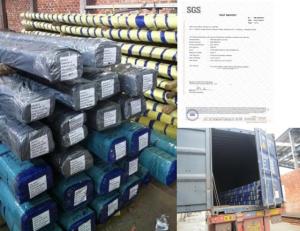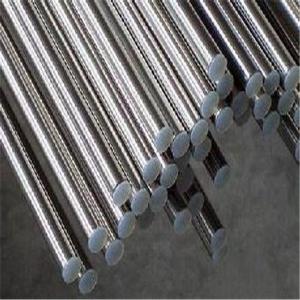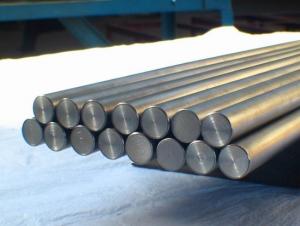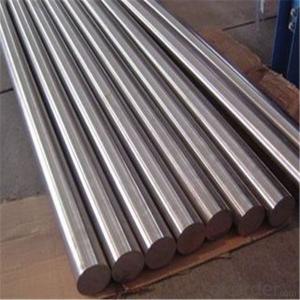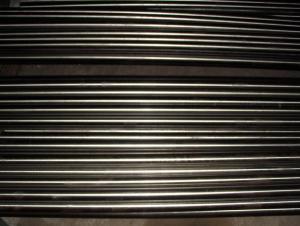321 Stainless Steel Bar
- Loading Port:
- China Main Port
- Payment Terms:
- TT or LC
- Min Order Qty:
- 5 Tons m.t.
- Supply Capability:
- 1000 Tons Per Month m.t./month
OKorder Service Pledge
OKorder Financial Service
You Might Also Like
Stainless Steel Bar
Stainless Steel Round Bright Bar
Hot-rolled Stainless Steel Black Bar
Grades:201、202、301、302、303、304、316、316L、321 etc
|
Diameter (mm) |
weight (kg/m) |
Diameter (mm) |
weight (kg/m) |
Diameter (mm) |
weight (kg/m) |
Diameter (mm) |
weight (kg/m) |
|
2 |
0.025 |
14 |
1.221 |
30 |
5.607 |
50 |
15.575 |
|
3 |
0.056 |
15 |
1.402 |
32 |
6.38 |
55 |
18.846 |
|
4 |
0.1 |
16 |
1.595 |
34 |
7.202 |
60 |
22.428 |
|
5 |
0.156 |
18 |
2.019 |
35 |
7.632 |
65 |
26.322 |
|
6 |
0.224 |
19 |
2.249 |
36 |
8.074 |
70 |
30.527 |
|
7 |
0.305 |
20 |
2.492 |
38 |
8.996 |
75 |
35.044 |
|
8 |
0.399 |
22 |
3.015 |
40 |
9.968 |
80 |
39.872 |
|
9 |
0.505 |
24 |
3.588 |
42 |
10.99 |
85 |
45.012 |
|
10 |
0.623 |
25 |
3.894 |
45 |
12.616 |
90 |
50.463 |
|
11 |
0.754 |
27 |
4.542 |
46 |
13.183 |
95 |
56.226 |
|
12 |
0.897 |
28 |
4.884 |
48 |
14.354 |
100 |
62.3 |

- Q:Are stainless steel bars suitable for conveyor belts?
- Yes, stainless steel bars are suitable for conveyor belts. Stainless steel is known for its durability, resistance to corrosion, and high strength, making it an ideal material for conveyor belt applications. Additionally, stainless steel bars provide excellent hygiene and cleanliness, which is crucial in industries like food processing or pharmaceuticals.
- Q:What are the typical mechanical properties of stainless steel bars?
- The typical mechanical properties of stainless steel bars include high tensile strength, good corrosion resistance, excellent toughness, and low magnetic permeability.
- Q:Are stainless steel bars suitable for architectural balustrades?
- Indeed, architectural balustrades benefit greatly from the use of stainless steel bars. As a material, stainless steel boasts high durability and resistance to corrosion, rendering it perfect for outdoor installations like balustrades. Moreover, stainless steel demands minimal maintenance, ensuring little effort is needed to keep it in pristine condition over the years. Furthermore, its sleek and contemporary look enhances the overall visual appeal of buildings and structures. Stainless steel bars can be crafted in a multitude of sizes and designs, catering to diverse architectural styles and needs. Ultimately, stainless steel bars offer a robust and reliable solution for architectural balustrades, guaranteeing strength and security.
- Q:Are stainless steel bars resistant to fire?
- Certainly, stainless steel bars possess fire resistance. Stainless steel is renowned for its exceptional ability to withstand heat and fire, hence why it is widely chosen for various applications where fire safety is paramount. Differing from other materials, stainless steel does not readily melt, distort, or weaken when subjected to elevated temperatures. It boasts a remarkable melting point and maintains its structural integrity even in the face of intense heat or fire. This outstanding fire resistance attribute renders stainless steel bars suitable for use in construction, industrial environments, and even in household appliances like stovetops and grills. Moreover, the corrosion resistance of stainless steel prevents it from rusting or deteriorating when exposed to high temperatures or fire, further bolstering its fire-resistant qualities.
- Q:What is the typical length of a stainless steel bar?
- The length of a stainless steel bar can differ and relies on its intended use and industry standards. Various lengths of stainless steel bars are available, ranging from a few inches to several feet. For instance, in industrial settings like construction or manufacturing, stainless steel bars are often found in lengths of 12 feet or more. However, for smaller-scale uses or DIY projects, shorter lengths of stainless steel bars, like 3 or 6 feet, can be found. To determine the appropriate length of a stainless steel bar, it is vital to review the project or application's specifications and requirements.
- Q:Can stainless steel bars be etched?
- Yes, stainless steel bars can be etched. Etching is a process that involves using an acid or chemical solution to remove material from the surface of the stainless steel, creating a design or pattern. This technique is commonly used for decorative purposes or to apply identification markings on stainless steel bars.
- Q:What is the difference between stainless steel bars and stainless steel tubes?
- Stainless steel bars and stainless steel tubes differ in their shape and dimensions. Stainless steel bars are solid, cylindrical pieces of metal with a uniform diameter. They are typically used for structural purposes and are available in various sizes and lengths. On the other hand, stainless steel tubes are hollow cylindrical structures with a defined inner and outer diameter. They are commonly used for fluid transfer or as structural components in industries such as construction, automotive, and manufacturing. Another difference lies in their manufacturing process. Stainless steel bars are typically produced through hot rolling or cold drawing processes, where the steel is shaped and formed into the desired dimensions. Stainless steel tubes, on the other hand, are made using a process called tube extrusion or tube welding. This involves forcing the stainless steel through a die or welding together flat strips to create the hollow tube shape. Additionally, the applications for stainless steel bars and tubes differ due to their physical properties. Stainless steel bars are known for their strength and durability, making them suitable for load-bearing applications such as construction supports, machinery components, and reinforcement bars. Stainless steel tubes, on the other hand, are valued for their corrosion resistance and ability to withstand high pressure or temperature environments. They are commonly used for plumbing, heat exchangers, automotive exhaust systems, and structural frameworks. In summary, the main difference between stainless steel bars and stainless steel tubes lies in their shape, dimensions, manufacturing process, and applications. While bars are solid and cylindrical, tubes are hollow and have defined inner and outer diameters. Bars are used for structural purposes, while tubes are commonly utilized for fluid transfer and as structural components in various industries.
- Q:What is the difference between a hexagonal bar and a square bar?
- The main difference between a hexagonal bar and a square bar lies in their shape. A hexagonal bar has six equal sides and six angles, forming a hexagon shape, while a square bar has four equal sides and four right angles, forming a square shape. This difference in shape affects their applications and uses in various industries.
- Q:Are stainless steel bars suitable for outdoor applications?
- Yes, stainless steel bars are suitable for outdoor applications. Stainless steel is highly resistant to corrosion and rust, making it well-suited for outdoor environments where it is exposed to moisture, humidity, and other weather elements. Additionally, stainless steel has excellent strength and durability, making it capable of withstanding the rigors of outdoor conditions.
- Q:What are the applications of stainless steel bars in the oil refining industry?
- Stainless steel bars have a wide range of applications in the oil refining industry due to their unique properties and characteristics. Here are some of the key applications: 1. Heat exchangers: Stainless steel bars are commonly used in the construction of heat exchangers due to their excellent heat resistance and corrosion resistance properties. Heat exchangers are essential in the oil refining process for transferring heat from one fluid to another, and stainless steel bars ensure the durability and longevity of these components. 2. Piping systems: Stainless steel bars are extensively used in the fabrication of piping systems within the oil refining industry. These bars provide high strength and resistance to corrosion, making them suitable for transporting various petroleum products and chemicals. They also have excellent weldability, ensuring the integrity of the piping network. 3. Storage tanks: Stainless steel bars are utilized in the construction of storage tanks for storing crude oil, refined products, and chemicals. These bars offer superior resistance to corrosion and oxidation, preventing contamination and ensuring the longevity of the tanks. Stainless steel tanks are also easier to maintain and have a longer service life compared to other materials. 4. Pressure vessels: Stainless steel bars find applications in the manufacturing of pressure vessels used in oil refining processes. These vessels are designed to store and handle high-pressure fluids, and stainless steel bars provide the necessary strength and corrosion resistance for safe operation. 5. Valves and fittings: Stainless steel bars are commonly used in the production of valves, fittings, and other fluid control components used in oil refining. These bars offer excellent resistance to corrosion and erosion, ensuring the reliability and longevity of these critical components. 6. Catalyst support grids: Stainless steel bars are employed in the construction of catalyst support grids used in various refining processes. These grids provide stability and support to catalyst materials, enabling efficient chemical reactions. Stainless steel bars are preferred due to their high-temperature resistance and resistance to chemical attack. Overall, stainless steel bars play a vital role in the oil refining industry by ensuring the integrity, durability, and efficiency of various equipment and components. Their exceptional resistance to corrosion, high temperatures, and chemicals make them an ideal choice for applications where reliability and longevity are paramount.
1. Manufacturer Overview |
|
|---|---|
| Location | Wuxi,China |
| Year Established | 2003 |
| Annual Output Value | Above US$8.3 Million |
| Main Markets | SouthEast Asia |
| Company Certifications | ISO9001:2000 |
2. Manufacturer Certificates |
|
|---|---|
| a) Certification Name | |
| Range | |
| Reference | |
| Validity Period | |
3. Manufacturer Capability |
|
|---|---|
| a)Trade Capacity | |
| Nearest Port | Shanghai |
| Export Percentage | 30% |
| No.of Employees in Trade Department | 30 People |
| Language Spoken: | English;Chinese |
| b)Factory Information | |
| Factory Size: | Above21,000 square meters |
| No. of Production Lines | Above 7 |
| Contract Manufacturing | OEM Service Offered;Design Service Offered |
| Product Price Range | Average |
Send your message to us
321 Stainless Steel Bar
- Loading Port:
- China Main Port
- Payment Terms:
- TT or LC
- Min Order Qty:
- 5 Tons m.t.
- Supply Capability:
- 1000 Tons Per Month m.t./month
OKorder Service Pledge
OKorder Financial Service
Similar products
New products
Hot products
Related keywords
